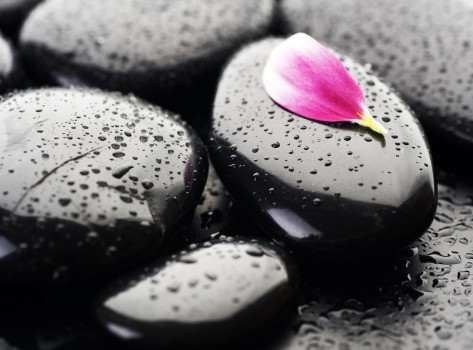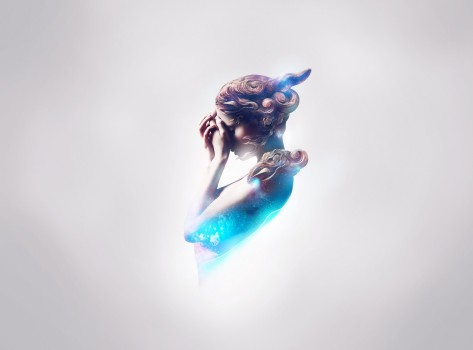
Festivals of Kolkata
Bengali New Year
The Bengali New Year or "Poila Baisakh" (the first day of the month of Baisakh) is celebrated around April 15 on the basis of the lunar calendar of Bangabda. Visitors to homes are greeted with sweets, and trade establishments offer free sweets as a goodwill gesture on this day. It is celebrated by cultural programmes throughout Kolkata.
English New Year
The 31st December night is observed with much funfare in Kolkata. The heart of all action lies in the Park Street area where people revel throughout the night.
Durga Puja
The Durga Puja festival, held in accordance to the lunar calendar of Bangabda around the first week of October, is the most vibrant time in Kolkata. This Hindu religious festival commemorates the mythology of Goddess Durga and her trusty lion steed overpowering and killing the demon Mahishasura (Buffalo-demon). The first ceremony takes place on Mahalaya, the day the Goddess was conceived, and ends on Bijaya Dashami (the victorious tenth day), the day the Goddess finally kills the demon in battle. Puja is performed only on the sixth to the tenth day. Kolkata celebrates Durga Puja with elaborate pandal—temporary decorative scaffolding serving the purpose of a temple—constructions on virtually every street. Crowds of people throng the streets of Kolkata all night; the number is purported to be a few million on the climactic eighth and ninth nights, possibly the second largest annual human conglomerate after the Hajj. On this festival, there is a practice of giving gifts—usually new clothes in the latest fashion in pre-puja get-togethers, and sweets at post-puja get-togethers (Bijaya Sammelani). The festival is commemorated by the publishing of Annuals (Sharadiya or Puja Annual) by most Kolkata magazines and presses.
Today's Puja goes far beyond religion. In fact, visiting the pandals recent years, one can only say that Durgapuja the largest outdoor art festival on earth. In the 1990s, a preponderance of architectural models came up on the pandal exteriors, but today the art motif extends to elaborate interiors, executed by trained artists, with consistent stylistic elements, carefully executed and bearing the name of the artist.
At the end of the six days long festival, the idol is taken in a procession amid loud chants and drumbeats to the river or other water body, and it is cast in the waters symbolic of the departure of the deity to her home with her husband in the Himalayas. After this, in a tradition called Vijaya Dashami, families visit each other and sweetmeats are offered to visitors (Dashami is literally tenth day and Vijay is victory).
Kali Puja
Kali Puja is primarily a Bengali festival, held in accordance to the lunar calendar around the first week of November. The Goddess Kali is worshipped at night on one night during this festival. Kali Puja is light-up night for Kolkata, corresponding to the North Indian festival of Diwali (pronounced Dipabali in Bengali), where people light candles in memory of the souls of departed ancestors. This is also a night of fireworks, with local youth burning sparklers and crackers throughout the night. Kolkata had to pass legislature a few years back to ban fireworks which break the 65 decibel sound limit, as ambient noise levels were going up to 90 decibels or more in parts of the city.
Saraswati Puja
Saraswati, the Goddess of Learning, Saraswati Puja is celebrated with domestic pujas, and familial gatherings in Kolkata. The typical fare (bhog) which accompanies the Puja depends dramatically on whether the family is initially from West Bengal (or ghoti) or from East Bengal—now Bangladesh—(or bangal). Ghotis have vegetarian fare, while bangals partake paired Hilsa fishes. Idols for these and other Pujas are made in the famous potters' district of Kumartuli. In Bengal, during Saraswati Puja, students celebrate the Homecoming of the Goddess of Learning. Books are often worshipped in lieu of the clay image of the Goddess. The puja is especially celebrated in schools and other educational institutes. And gives an opportunity of free-mixing among school children. This is the equivalent of Valentine's Day to them.
Dol Jatra (Holi)
Dol, corresponding to the North Indian festival of Holi, is celebrated on account of the god Lord Krishna, and is supposedly coincident with the coming of spring. The festival of colour involves powdered colour (aabir), and water colour (jal rang). Unsuspecting passers by are often drenched by coloured water balloons, and celebrations often get rowdy with the men partaking the intoxicating drink of shiddhi (bhang), often laced with the stronger charas.
Ratha Yatra
The symbolic movement of the chariot of Jagannath (source of the English juggernaut) is celebrated with much fanfare in Kolkata due to the huge chariot brought out by ISKCON. The destination of the cult figures are the Maidan. The "idols" are brought back after a week in the chariot in the festival of Ulto Ratha ("reversed Ratha") . The week is synonymous with numerous fairs (Rather mela) held all over Kolkata parks, known for their distinctive food and carousels. Myth has it that it always rains on the day of Ratha Yatra in Kolkata.
Eid
The two Eids, Eid ul-Fitr ("the little feast") and Eid ul-Adha ("the big feast") commemorate the passing of the month of fasting, Ramadan, and the willingness of the Prophet Ibrahim to sacrifice his son (not named in the Qu'ranic account but sometimes assumed to be the Prophet Ishmael) for Allah. As Kolkata is considered to be the gastronomic capital of Eastern India, the feasts are often lavish street affairs open to all, and restaurants specializing in Islamic cuisine like Shiraz, Nizam and Aminia offer special menus for the day.
Christmas
Christmas was a big festival in Kolkata during the British Raj, but has slowly declined in importance since. The Anglo-Indian community still celebrates Christmas in a big way, with a huge service at St. Paul's Cathedral and with the Park Street restaurant district and New Market decked out on the 24th and 25th. The multicultural nature of Kolkata becomes apparent as the most sought after confectionaries during this time were from the British confectioners Flury's and Jewish confectioners Nahoum's.
Dover Lane Music Festival
The Dover Lane Music Festival is one of the most prestigious festivals of Hindustani classical music, showcasing maestros the world over as well as promising new talent. It has been held for the past years in the January conglomerate holiday (January 23 - January 26) period and comprises three all-night recitals. Initially held open air at Dover Lane in Ballygunge area of South Kolkata, due to the large crowds, it is now held at the open air theatre Nazrul Mancha on the Southern Avenue (Ballygunge area). It is held in conjunction with the Dover Lane Music Conference.
Calcutta Book Fair
The 'Calcutta Book Fair (or Kolkata Boi Mela) is unique and is the world's largest non-trade annual book fair. Held on the Maidan, this fair attracted over 600 stalls, selling over Rs. 18,00,00,000 (read as "18 crores") worth of books and attracting close to 150,000 visitors in 2005. Started in 1975 by the Publishers' and Booksellers' Guild, it has rapidly become one of the world's leading book fairs. It has a Monmarte with budding poets and artists, an annual theme country with authors like Günter Grass and Richard Dawkins visiting the fair as chief guests, a fairground experience complete with candyfloss and hawkers, but most importantly, it provides a place to view more than a million new and used book titles at one go—a larger book conglomerate than any Barnes & Noble or Borders superstore. It starts on the last Wednesday of January, and continues for twelve days, including two weekends.
Kolkata International Film Festival
The Kolkata International Film Festival is screened annually from November 10–17. The largest and most prestigious of its kind in India, it was started in 1995 and is affiliated with the International Federation of Film Producers' Association (FIAPF) in Paris. Kolkata's strong ties to film-making (through such icons as Satyajit Ray and, more recently, Rituparno Ghosh) has boosted the festival and it screens a large clutch of international, critically acclaimed new films every year.
The National Theatre Festival is an annual event and the biggest event in the Indian theatre calendar. Kolkata is the theatre capital of India, and the festival is organized by the Nandikar group, one of the most dynamic and talented Indian theatre groups. Nandikar's National Theatre Festival was initiated in 1984 to commemorate Nandikar's silver jubilee and has not looked back since.
National Children's Theatre Festival
The National Theatre is an annual event (first week of June)organised by Kolkata [Eso Natak Shikhi][www.calcuttayellowpages.com/adver/103336.html], a Kolkata based group theatre working with children since 1990. Teams from all over India & abroad participate & perform at Rabindra Sadan. The fest is assisted by Ministry of Culture & Information, Government of West Bengal. Ministry of Transport & Sports, Government of West Bengal. Eastern Zonal Cultural Centre, Ministry of Tourism & Culture, Govt. of India.
Kolkata International Music Festival (KIMF)
Kolkata- a city that has made its mark as one of the great cultural centers in the world. The wealth of creativity that had always existed here is complemented today by an array of arts venues and other intriguing public spaces where possibility is limited only by the bounds of imagination.Theatre, music, dance, film, literature, visual arts; you name it, Kolkata excels at it.
Song of Soul will bring you an exclusive festival in December 2011 (15th to 25th) at the Science City Grounds, the Kolkata International Music Festival (Folk and Tribal)[5]. The festival is the biggest in India. For 10 exhilarating days you can be part of an adventure that will stimulate your senses and inspire your mind. It is a celebration of the human potential in music.
Featuring more than 650 artistes from India and abroad, exhibitions, lectures, panel discussions and workshops, this is a first-of-its-kind festival that will reveal the incredible cultural richness and diversity of the folk and tribal music. It is different from every other music festival because it focuses on these neglected forms, which we take for granted. That attitude must change now, so as to give folk and tribal music the respect it deserves.
There is so much to see in KIMF, so much to hear and feel, to share and to be moved by. So for those four days, we invite you to go folk and tribal!



